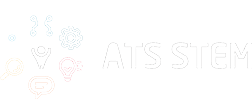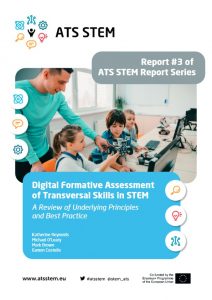16 Dec 3 Digital Formative Assessment of Transversal Skills in STEM
Digital Formative Assessment of Transversal Skills in STEM
“Incorporation of technology into formative assessment is a means to an end, not a goal in its own right. Formative assessment validity evidence is seriously compromised if a formative assessment practice does not yield increased student learning.”Key takeaways
- Policy makers can gain an understanding of formative assessment practices and key questions and consideration related to digital formative assessment. The report aims to promote awareness towards the need for digital formative assessment plans to cohere with other educational priorities and ensure equity in access to digital tools and programmes.
- For teachers and teacher educators, the report details formative assessment design, implementation, potential uses of formative assessment and digital formative assessment.
- For students, the report highlights incorporation of technology into formative assessment practice in service of improving student learning.
- The report hopes to encourage cooperation and investment in research and development for digital formative assessment.
The Report
This report was written as a part of a research project titled Assessment of Transversal Skills in STEM (ATS STEM) funded by Erasmus+. It is the third in a series of five reports based on deliverables related to the ATS STEM project, addressing two major themes.
First, consideration is given to the key ideas and principles underlying formative assessment theory. Second, the current state of the art with respect to how STEM digital formative assessment is conceptualised and leveraged to support learning of transversal skills in STEM is discussed. Particular attention is paid to approaches that enable problem/research-based learning, enquiry-based learning, collaborative learning and mobile learning.
Formative assessment is considered to be a dynamic or cyclical process involving the elicitation and interpretation of evidence that will be used by learners and their teachers to make decisions about next steps in learning. It inherently requires an understanding of instructional goals (i.e., the knowledge or skills to be learned), students’ current progress in reaching those goals, and what students must do to close the gap between their current attainment and the end goals.
Feedback, in particular, plays a central role in formative assessment. The important thing about feedback is what students do with it. While there is no way to guarantee that students will use feedback in a given situation, there are some forms of feedback that stand a greater chance of being effective than others. Feedback related to process and self-regulation is considered to be most helpful in advancing student learning.
Above all, teachers must provide enough time for both the provision of feedback and for students to make sense of and use the feedback. When this happens, the research evidence suggests that formative assessment can be effective for bolstering student achievement in STEM fields, as well as in other areas such as self-regulation and motivation to learn.
In designing formative assessments, a key principle to follow is that if a formative assessment does not support student learning, then it cannot be said to be valid for its intended purpose. Thus, attention to student learning that occurs as a result of formative assessment is an essential part of a validity argument in support of it.
Meanwhile, interest in digital formative assessment has grown rapidly in the past few decades and some reasons for that include: the provision of feedback in a timelier manner; the assessment of hard to measure constructs and processes that were previously inaccessible; the inclusion of new item types capable of providing more nuanced information about learning; automation of the feedback process; access for students with disabilities; greater opportunities for student collaboration.
In planning for technology-enhanced formative assessment four types of learning for building critical skills in STEM must be considered:
- Problem and research-based learning (PBL) – a constructivist approach to learning, where students are given meaningful problems to solve.
- Enquiry based learning – similar to PBL but students pose questions and carry out investigations to answer those questions.
- Collaborative learning – where students work in small groups to achieve a learning goal.
- Mobile learning – where students use mobile devices in the context of a learning environment inherently based on the use of technology or when technology provides greater flexibility in terms of where the learning takes place.



